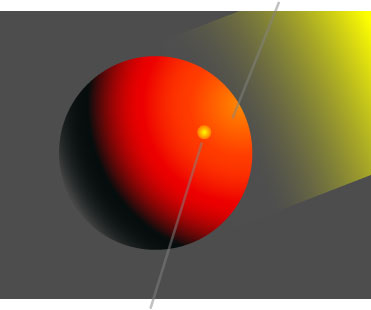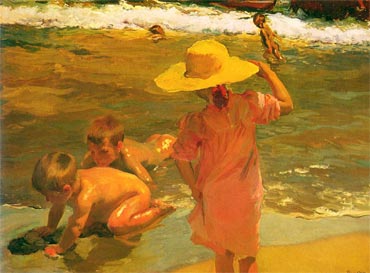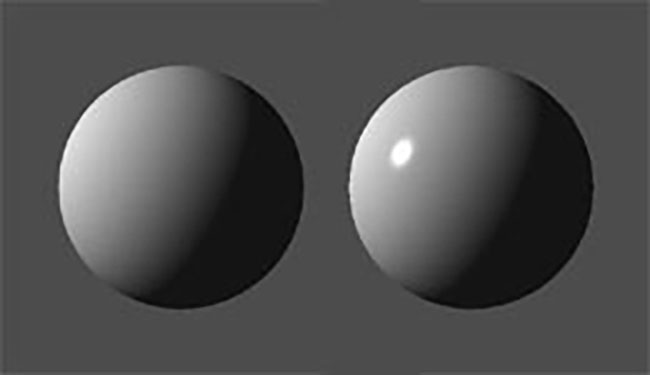
A shiny red object + yellow light = Orange 'diffused highlight'
... PLUS a yellow 'specular highlight'. The term 'specular' means that light is perfectly reflected in a mirror-like way from the light source to the viewer. Many text books wrongly show the specular highlight always being located in the centre of the highlight area perpendicular to the light source like this...

...where in fact true specular highlights are always found at the inverse of the angle of incidence.
Learn more:
http://en.wikipedia.org/wiki/Specular_highlight
http://en.wikipedia.org/wiki/Specular_reflection
Since specular highlights are clear reflections of the light source they also happen to tell us the exact color of the light - if we're seeing a perfect reflection that is. The less shiny a surface, the less the specular highlight will display the true color of the light, and the more it will take on the color of the object.
Joaquín Sorolla is renown for his portrayal of golden sunlight throughout many of his scenes. The specular highlights on the wet children and in the little wavelets in the foreground key our eyes to the yellow color of the sunlight.

Children on the Seashore, 1903. Joaquín Sorolla.
Specular highlights occur on shiny surfaces such as wet objects, chrome, cherries ,etc. When we see them we understand that the surface is shiny. Compare these two balls - they are exactly the same except for the specular highlight. Amazing the difference it makes to our perception of the surface isn't it?

Here's an interesting video (not mine) about the differences between diffused and specular highlights.
Here's an interesting discussion about it all on www.conceptart.org
With oil and acrylic paints the specular highlight should go on last of all and be the thickest paint on the canvas so that it will catch the light and really sparkle. With watercolor you have the option of masking it off with masking fluid till the very end or using white gouache mixed with the color of the light and working on top of your watercolor.
Either way, getting the color of the specular highlight and it's placement on the object just right are critical to showing the color of the light and the form and surface texture of your object - so visualize where it's going to go, take a big breath and.... good luck! Oh, and take a good hard look at the edges of it - where is it sharp or smooth?
You might also enjoy this lesson:
Login to your account to post a comment.